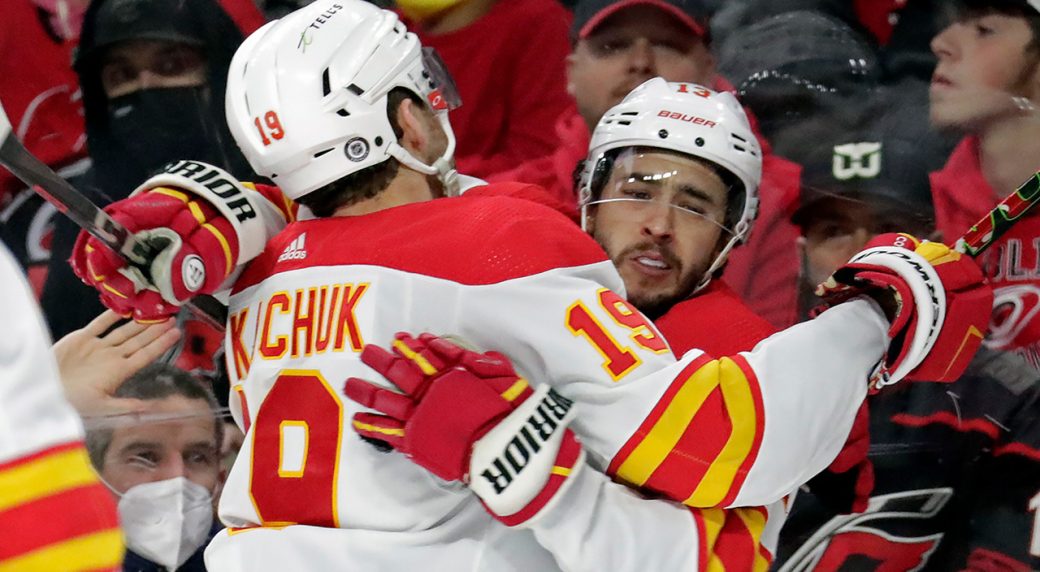With almost every team either at or past the midpoint of the 2021-22 season, we can start looking at highlights from the first half – starting with the best lines.
We’re going to put our own spin on it. When analyzing the best lines, we’re usually drawn to those leading a team – they are typically the combinations with the most skill and scoring, after all. But by only looking at the top of the lineup, three-quarters of a forward group are excluded. That’s why we’re going to go line by line to identify the ‘best’ around the league.
It comes with a catch, though — these are the best lines that are still active. It only makes so much sense to look at a trio that the coaches broke up, unless injuries came into play.
First Line
When it comes to top lines, Johnny Gaudreau-Elias Lindholm-Matthew Tkachuk is one of the best. First, this trio gets credit for longevity — no line has played as much time together this season than their ~478 5-on-5 minutes.
Then, of course, there’s what they do in that time together.
In Gaudreau, the Flames have one of the best puck carriers. Few can bring the puck out of the defensive end more frequently with control — only four players rank ahead of him in controlled exit rate at 5-on-5. And no one brings it into the offensive zone more than the league leader, who stands at the top with 25 controlled entries per 60 and the best 21.9 carry-ins per 60, specifically. His stellar puck movement continues to shine once in the zone, as he’s one of the most frequent passers in the league in terms of quantity and quality.
Not only can he set up his teammates, but Gaudreau generates his own chances, too: he’s second in the league in slot shots taken on the rush.

Having a dual threat like Gaudreau would make most line combinations dangerous. But he isn’t the only player to watch for. In Tkachuk, Calgary has a disrupter who is more than willing to shoot the puck. Not only does he do his best to pepper opposing goalies in shots, but he challenges them with quality looks as well. With 3.65 inner slot shots per 60, Tkachuk ranks 11th in the league at 5-on-5 — most of which are generated off the cycle, whether he’s taking the shot or deflecting his teammates’ attempts.
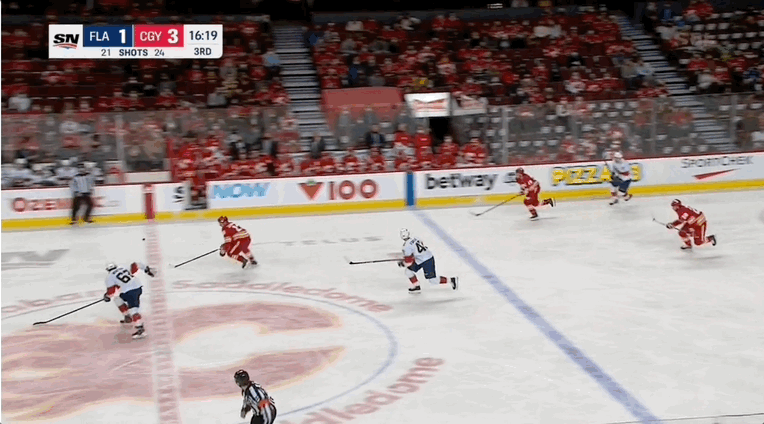
To round out that duo is Lindholm. He’s the ‘quietest’ presence on the line, but can’t be overlooked. Although he hasn’t quite scored at the rate of his linemates, he often sparks the play by forcing a turnover to regain possession. Plus, he provides balance with his two-way play – adding stability without dragging his linemates down because he’s too one-dimensional. That’s helped the line outscore its opponents 31-8 at 5-on-5. Those results — a 79.5 per cent goals share — exceed expectations, but they’re driving play better than most with a 69.7 per cent expected goal rate.
Along with the Flames’ leading line, two other top lines have really stood out in the first half: Kirill Kaprizov-Ryan Hartman-Mats Zuccarello in Minnesota, plus Jason Robertson-Roope Hintz-Joe Pavelski in Dallas.
Second Line
The idea here is to look at active lines. But injuries can get in the way of that, just ask the Wild. But given that the Jordan Greenway-Joel Eriksson Ek-Marcus Foligno line already has 184 minutes of 5-on-5 ice time this year, plus 320 minutes last year, it’s a safe bet that this will be a short pause in their tenure. They’re bound to reunite once Foligno returns to lineup.
All three are tough to play against and create havoc for opposing goalies. They’ll battle for loose pucks, pressure for turnovers, and drive right to that net-front area. Both Eriksson Ek and Foligno rate in the top-50 skaters in inner-slot shots per 60 at 5-on-5. That’s something the centre has really built on, which helped lead to a breakout year last season. Greenway’s stick-checks help clear the way for his linemates to shoot.
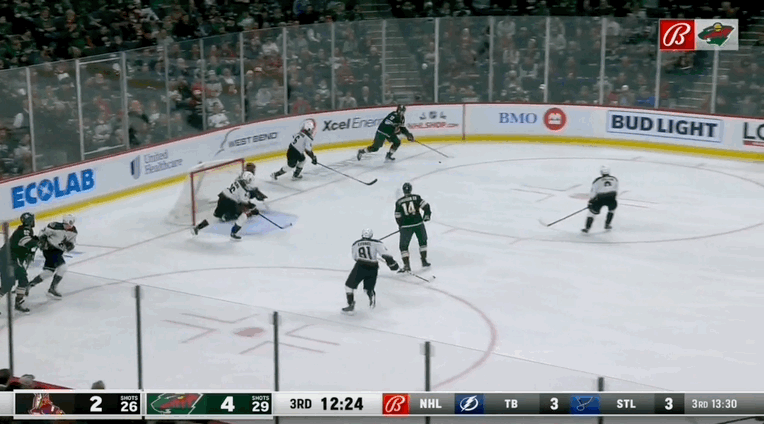
The key with this line is their balance of two-way play. Minnesota hasn’t allowed a goal against with this line on, but has scored nine. Goaltending obviously plays heavily into it, but they put in the work in their own end. Eriksson Ek was in the Selke conversation last year, and Foligno was one of the best defensive forwards in the league. Together, they limit their opponents from generating quality chances from the home plate area in front of the net, and try to force them out of the defensive zone. That’s helped the Wild contribute about 61 per cent of the expected goal share while this line is deployed. Clearly, that’s not quite the 100 per cent goals share they’re currently rocking — but it does highlight the line’s efforts at both ends of the ice.
This second line thrives off frustrating its opponents. Foligno, for example, has drawn 35 penalties this year at 5-on-5, while Eriksson Ek’s one shy. Greenway’s drawn another 20. The key difference is that the centre is quite disciplined with just 10 penalties for, leaving him with one of the best differentials in the league.
The Hurricanes’ second line (which is really a ‘1B’ to the ‘1A’ line led by Sebastian Aho) of Andrei Svechnikov, Vincent Trocheck, and Martin Necas also gets a nod here. They generate a high rate of shots and quality looks, and have converted at a ridiculous rate of 6.93 goals per 60 that leads all line combinations at 5-on-5. They are, at least, momentarily on pause, as Svechnikov moved up to replace the injured Teuvo Teravainen on the top line these past couple of games.
Third Line
The bottom six is where things can get a bit trickier. Most active third lines don’t check off all of the criteria we’re looking for: longevity and strong results. So these may not capture ‘the best’ of the first half as accurately. But they’re lines that were successful to open the 2021-22 season and are worth keeping an eye on over the next stretch.
The best third line with some ice time to back it up? Mason Marchment-Anton Lundell-Sam Reinhart in Florida. You know, that trio that popped off for six goals against Columbus Monday night.
Lundell keeps strengthening his case in the Calder race. He finished January with 17 points in 15 games, and can be counted on to help move the puck up the ice, whether he’s sending a stretch pass from the defensive end to his teammate forward on the rush, or carrying the puck in himself.
That pairs well with his linemates, who both are more than willing to shoot. Reinhart and Marchment create scoring chances by getting to the slot. That’s where Reinhart takes about 66.7 per cent of his shots — and the fact that he’s on the third line shows how deep this team is up front. On the other wing, Marchment helps generate those slot shots on the rush. What adds to his game is that he can move the puck to that area of the ice too; that helped set up Reinhart’s goals on Monday.
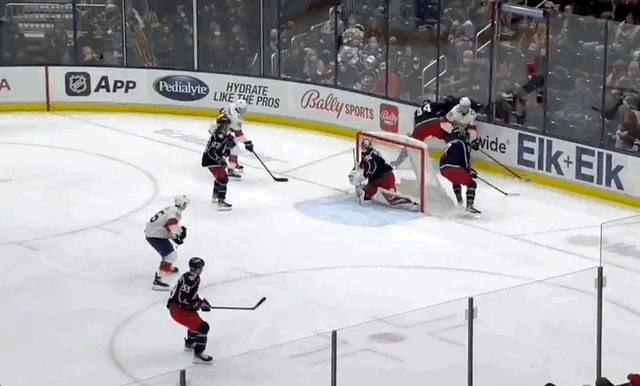
Going into the game against the Blue Jackets, Marchment was on a three-game point streak with four goals and six points. He doubled that against Columbus with two goals and six points. That’s 52 per cent of his scoring this season scored in four games. And all of that scoring came at even strength.
Monday’s game wasn’t the first time this line gave the team a boost — when they’re on the ice, the shots are generally tilted in the Panthers’ favour. When factoring in ‘quality,’ they’re controlling about 73 per cent of the expected goal share seeing as they create a lot of offence, and don’t allow their opponents to generate much. They’re outperforming it now, with the team scoring 12 goals for when they’re on the ice and not allowing a single one against. That perfection won’t last, but having a skillful third line combination should as long as they’re together.
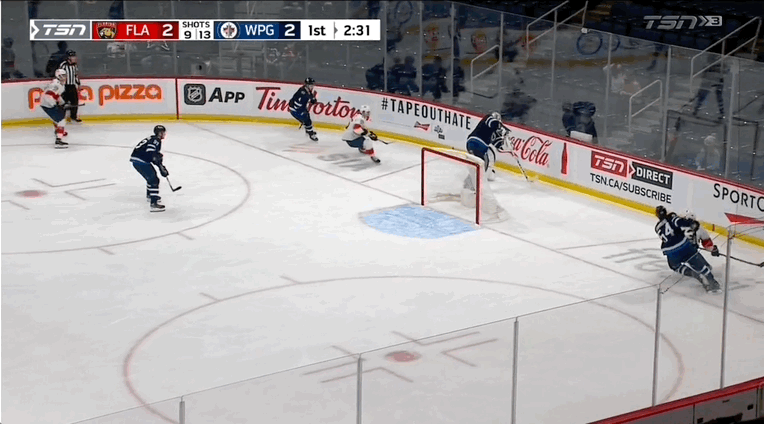
The other third line combination to highlight comes from Minnesota — a team that has already been featured in both top-six categories. In about 77 minutes, rookie Matt Boldy, Frederik Gaudreau and Kevin Fiala have formed a productive third line trio to really help round out the Wild lineup. With a 63.7 per cent expected goal rate, there’s signs of sustainable success forming.
Fourth Line
Finding a successful fourth line can be a challenge. Sometimes coaches prefer to rotate their 12th and 13th forwards in the lineup, or have too many fringe players to really lean on that trio. So minutes played and consistency generally can be a testament to their success. One combination that actually has it? A line of kids in Tampa Bay with Boris Katchouk, Ross Colton and Taylor Raddysh.
This combination has played almost 162 minutes together; that’s in the top-40 among all lines deployed this season. They see a higher percentage of offensive zone starts versus Tampa’s veteran third line, but go against tougher competition.
The offensive generation is somewhat average, but their defensive efforts are what stand out. Relative to other Lightning lines, they aren’t perfect in limiting chances against. Where they do excel, however, is keeping their opponent out of the high danger areas of the ice.
On a team as deep as the Lightning, having inexpensive depth is everything — so instead of overpaying for the depth they won with, they’ve retooled their bottom six to have reliable, inexpensive options they can lean on.
Data via Sportlogiq
[relatedlinks]
